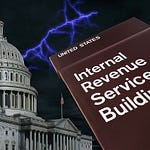For nearly a century, the United States has been steadily marching down a path paved by Progressive ideologues, starting with Woodrow Wilson and cemented by Franklin D. Roosevelt. These architects of centralized power turned the federal government into a bloated, overreaching behemoth, eroding the sovereignty of states and the liberty of individuals in favor of a technocratic elite.
Enter Donald Trump—a brash, unapologetic disruptor whose policies and actions signal a return to the anti-federalist roots of the nation. Far from the chaos agent his detractors paint him as, Trump’s tenure represents a deliberate pushback against the Progressive stranglehold, aiming to restore a balance that honors the decentralized vision of America’s founders.
To understand Trump’s anti-federalist streak, we must first reckon with the Progressive legacy he’s unraveling.
Woodrow Wilson, the professorial poster child of early Progressivism, sneered at the Constitution’s checks and balances, viewing them as quaint obstacles to his grand vision of an administrative state. His administration birthed the Federal Reserve and pushed for centralized economic control, setting the stage for a government that meddles in every corner of American life.
Then came FDR, whose New Deal metastasized federal power into a sprawling bureaucracy. Social Security, labor regulations, and a dizzying array of alphabet agencies didn’t just expand Washington’s reach—they entrenched a federalist ethos that treated states as mere administrative units rather than sovereign entities.
Progressives, cloaking their ambitions in the guise of compassion, sold the public on the idea that only a strong central government could solve society’s ills. Over decades, this morphed into a federal leviathan—think LBJ’s Great Society, Obama’s healthcare overreach, and Biden’s climate crusades—each layering more power in Washington, DC, at the expense of local control. The result? A nation where unelected Deep State bureaucrats wield more influence than elected state officials, and where individual liberty drowns under the weight of endless regulations. This is the federalist dream: a homogenized, top-down system that smothers the diversity and autonomy the founders intended.
Donald Trump, for all his bombast, emerged as a wrecking ball to this Progressive edifice. His policies and actions consistently favor devolving power back to the states and the people, rejecting the federalist dogma that Washington knows best.
Take his approach to healthcare: rather than doubling down on Obamacare’s one-size-fits-all mandate, Trump pushed for deregulation and state-level experimentation. His administration rolled back federal overreach in Medicaid, giving states flexibility to tailor programs to their unique needs. This wasn’t just pragmatism—it was a deliberate nod to the anti-federalist belief that local governments, closer to the people, are better equipped to govern.
On education, Trump’s disdain for federal meddling is apparent. He champions school choice and is seeking to gut the Department of Education’s stranglehold, arguing that parents and states—not Washington, DC, mandarins—should dictate how kids are taught. Contrast this with Progressive darlings like Wilson, who saw education as a tool for national conformity, or FDR, whose acolytes centralized control over curricula. Trump’s stance echoes the anti-federalist wariness of a distant authority imposing its will on diverse communities.
Even his economic policies carry an anti-federalist streak. The Tax Cuts & Jobs Act of 2017 didn’t just slash rates—it capped the state and local tax (SALT) deduction, a move that curbed the ability of high-tax, Progressive-run states to offload their fiscal irresponsibility onto the federal ledger. Critics howled, but the message was clear: states should live within their means, not lean on the federal government as a crutch of salvation. This aligns with the anti-federalist view that each state should bear the consequences of its governance, free from federal bailouts or homogenizing subsidies.
Perhaps Trump’s most anti-federalist legacy is his assault on the administrative state—that unelected fourth branch of government Progressives adore. His administration is slashing regulations at a historic pace, axing eight rules for every new one enacted. Agencies like the EPA and FDA, long bastions of authoritarian federal overreach, saw their wings clipped as Trump prioritized state-level decision-making over edicts from Washington.
Progressives shriek that this “deregulation” is reckless, but they miss the point—or perhaps they don’t. The administrative state is their crown jewel, a means to bypass the decentralized Republic the founders envisioned. Trump’s war on the spendthrift administrative state isn’t just about efficiency; it is about restoring a balance where states and citizens, not faceless bureaucrats, hold the reins. This is anti-federalism in action: a rejection of centralized control in favor of diffused authority.
Trump’s policies didn’t arise in a vacuum—they are a reaction to a century of Progressive excess. Since Wilson’s technocratic fantasies and FDR’s New Deal empire-building, the federal government has grown into a colossus, swallowing state autonomy and individual freedom. The anti-federalists, those scrappy skeptics of centralized power, warned of this in 1787: a distant government would inevitably drift from the people’s will. Trump, flaws and all, tapped into that warning. His “America First” rhetoric isn’t just nationalism—it is a call to prioritize local needs over the globalist, federalist agenda Progressives fetishize.
Critics—federalists and Progressives alike—decry Trump as a destabilizer, but that’s the point. Stability, in their eyes, means preserving a system where Washington reigns supreme. Trump’s disruption, from trade wars to border security, aims to reassert the primacy of the nation’s parts over its whole. His border wall obsession? Less about xenophobia and more about states like Texas and Arizona reclaiming control from a federal government too timid—or complicit—to act. His trade battles with China? A rebuke to the federalist elite who’d sacrificed local economies for global integration.
Donald Trump is no philosopher-king, and his anti-federalist bent isn’t always articulate. But his instincts align with a vision the founders would recognize: a nation of sovereign states—fifty symbiotic states with fifty separate constitutions enjoined in a compact, not a monolith ruled from on high. After a century of Wilsonian centralization and Rooseveltian sprawl, Trump’s policies offer a corrective, not a cure-all. Progressives gasp in dismay at the rollback of their sacred federal apparatus, but that’s precisely why it matters. The balance they’ve tilted toward Washington for a hundred years is finally tipping back.
In the end, Trump’s legacy isn’t about perfection—it’s about rediscovery. By dismantling the Progressive federalist machine, he’s reminding Americans that power needn’t flow from a single source. The anti-federalists knew this; the founders baked it into the Constitution. Trump, in his unorthodox, polarizing way, dragged it back into the light. Whether that sticks depends on what comes next—but for now, the pendulum swings toward liberty, and away from the long shadow of Progressivism’s totalitarian overreach.
Then, when we return, a new segment called The Corner of the Bar, in which we speak with everyday Americans, some more qualified to speak on certain topics than others, but average Americans nonetheless. It’s a pulse of the mindset in everyday America. Today’s guest is Einar Ronningen.
Expanding Republican Majorities
In 2026 Is Critical For The Anti-Federalist Agenda
As Donald Trump continues to steer the Republican Party toward a bold, reformative anti-federalist agenda, the stakes for the 2026 mid-term elections could not be higher. Holding Republican majorities in the US House and Senate is not enough—expanding those majorities is an absolute necessity.
The alternative, a resurgence of neo-Marxist Progressives, anarchic far-Leftists, and Deep State Democrats in Congress, threatens to derail the American people’s electoral mandate to dismantle centralized bureaucratic overreach, slash federal spending, and restore power to the states and the people.
These ideological fifth column adversaries have proven time and again their willingness to obstruct, sabotage, and destroy any policy that challenges their statist worldview. To secure Trump’s legacy and protect the Republic from their ruinous influence, Republicans must not just defend their ground in 2026—they must advance.
Trump’s anti-federalist agenda is rooted in a rejection of the bloated, unaccountable federal leviathan that Progressives and Democrats have spent decades constructing. Trump’s policies—whether it’s deregulation, tax cuts, or devolving authority to the states—aim to break the stranglehold of Washington elites and return governance to a more localized, responsive level. This vision resonates with millions of Americans tired of being dictated to by unelected bureaucrats and coastal ideologues. But it’s a vision that terrifies the Left, who rely on federal power to impose their top-down, one-size-fits-all schemes on a nation that increasingly rejects them.
The 2026 mid-terms will be a referendum on this agenda. If Republicans fail to expand their majorities, the consequences will be dire. A Congress with slim GOP margins—or worse, one flipped to Democrat control—would empower Progressives and their allies to grind Trump’s reforms to a halt. They’ve done it before, and they’ll do it again.
Look no further than the early years of Trump’s first term, when a recalcitrant House under Nancy Pelosi’s decrepit iron grip stymied his efforts to fully repeal Obamacare or secure robust border funding. Even with Republican majorities, the margins were too thin, and moderate Republicans too spineless, to push through the most ambitious parts of his platform. Now, with an emboldened Trump doubling down on anti-federalism, the need for overwhelming congressional support is even more urgent.
Consider what’s at stake. Trump has signaled plans to gut federal agencies like the Department of Education and the Environmental Protection Agency, arguing they infringe on state sovereignty and burden taxpayers with wasteful mandates. It’s a move cheered by conservatives who see these bureaucracies as tools of Progressive overreach—think indoctrinating curricula and climate policies that kill jobs. But if Democrats retake the House or Senate in 2026, they’ll weaponize the budget process to protect these sacred cows. Funding will flow unabated to every pet project of the far-Left, from resurrected Green New Deal fantasies to regenerated DEI initiatives that divide rather than unite. Trump’s push to defund and decentralize will be dead.
Then there’s the judiciary. Trump’s ability to appoint originalist judges who respect the Constitution’s limits on federal power hinges on a Senate willing to confirm them. A Democrat Senate, led by the likes of Chuck Schumer or his successors, would stonewall every nominee, leaving vacancies unfilled and the courts vulnerable to activist judges who rubber-stamp Progressive agendas. Imagine a judiciary packed with jurists who uphold every federal overreach—Trump’s anti-federalist gains would unravel faster than you can say “filibuster.”
Border security, another pillar of Trump’s platform, would also suffer. Republicans with expanded majorities could finally deliver the wall, deportations, and immigration reforms Trump has long championed—policies aimed at asserting national sovereignty over the open-borders fetish of the Left. But if Democrats gain ground in 2026, they’ll block funding, push amnesty, and return the border to a revolving door for their future voter base. The chaos of 2021-2022, when millions crossed illegally under Biden’s watch, would look tame by comparison.
Economic policy offers another stark example. Trump’s tax cuts and deregulation unleashed a pre-COVID boom that Progressives still refuse to acknowledge. He wants to go further—slashing corporate welfare, simplifying the tax code, and unshackling small businesses from federal red tape. A fortified Republican Congress could make this a reality. But if the far-Left gains seats, they’ll resurrect their soak-the-rich rhetoric, jack up taxes, and smother entrepreneurs with regulations—all in the name of “equity” that somehow never trickles down to the working class they claim to represent.
The most insidious threat, though, is the Left’s obsession with expanding federal power through new entitlements and surveillance. Programs like Medicare for All or a universal basic income aren’t just budget-busters—they’re chains on state autonomy, locking Americans into dependency on Washington. Pair that with their push for digital IDs and censorship under the guise of “misinformation” crackdowns, and you’ve got a recipe for a federal dystopia that Trump’s agenda explicitly rejects. A Democrat surge in 2026 would embolden these efforts, turning Congress into a battering ram against the very freedoms Trump seeks to protect.
History warns us of the cost of complacency. In 2018, Republicans lost the House, and Trump’s first term was hobbled by endless investigations and legislative gridlock. The 2022 mid-terms, while a narrower disappointment, still left the GOP with a razor-thin House majority that struggled to unify. 2026 must be different. A decisive Republican wave—say, a 20-seat gain in the House and 5 in the Senate—would give Trump the muscle to enact his reforms without compromise. Anything less risks a repeat of past failures, with Progressives crowing as they dismantle his legacy brick by brick.
The culprits here are clear: Progressives who fetishize government control, far-Leftists who dream of socialism at any cost, and Democrats who cloak their power grabs in sanctimonious platitudes. They’re not just wrong—they’re dangerous. Their vision of America is a centralized monolith where dissent is crushed, and states are mere vassals of Washington. Trump’s anti-federalist crusade is the antidote, but it’s fragile. Without expanded Republican majorities in 2026, it’ll be smothered by a Congress that despises everything he stands for.
The choice is clear. Republicans must rally—we must keep the pressure on, not just to hold the line, but to charge forward. The mid-terms are a battle for the soul of the nation—Trump’s agenda hangs in the balance, and the Left is salivating to bury it. Expansion isn’t optional; it’s imperative. Anything less, and the Republic pays the price.


















